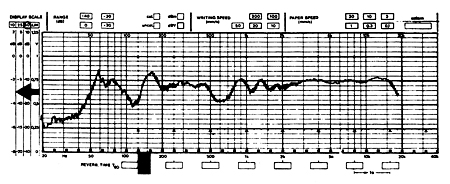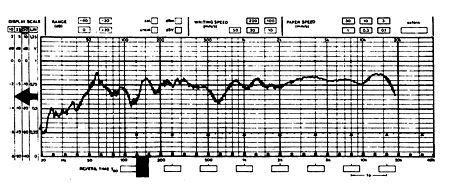| Columns Retired Columns & Blogs |
Dynaudio Accent 3 powered loudspeaker Measurements
Sidebar 1: Measurements
I was very curious to see just what the measured frequency response looked like. Sometimes the frequency response of a loudspeaker offers no clues as to why a speaker sounds the way it does. This seeming failure of objective measurements to corroborate subjective impressions is due primarily to the nature of the colorations. The auditory system is quite sensitive to broad-band low-Q resonances. Because they persist for many milliseconds and usually cover more than one critical band, these resonances translate into audible colorations—even if the amplitude of the resonance is quite low. Driver, cavity, or panel resonances may all play a role in coloring the sound of a loudspeaker. The problem is, on a frequency-response plot we may only see the tip of the iceberg. For example, a bump of 0.5dB may seem trivial, but may nonetheless be quite audible if its time signature is long enough. On a three-dimensional plot of amplitude vs frequency and time, the presence of low-level resonances would be quite obvious along the time axis. But on a pure amplitude vs frequency plot, this information is obscured. All we see is a record of the total energy radiated by the speaker (at a given point in space) per frequency interval.
In the case of the Active 3, there was no need to resort to such subtleties in order to substantiate my subjective impressions. The Active 3 makes for one lousy nearfield monitor, the response at one meter being pretty ragged (fig.1, left speaker; fig.2, right speaker; both measured on the midrange axis). At two meters (7'), however, the response above 200Hz is very respectable, observing ±2dB limits. As far as the chestiness I observed, there is evidence of a resonance in the range of 150–200Hz, with a 4dB peak centered at about 170Hz. This may very well account for my subjective impression of added oomph in the lower registers. Marked tonal-balance deviations were also measured along the vertical plane of the baffle. Movement of the microphone several inches from the midrange to the tweeter axis drastically altered the upper-midrange balance. And sure enough, the left and right channels did measure differently. For example, above 10kHz there was a 2dB difference in the output of the tweeters.

Fig.1 Dynaudio Accent 3, left-speaker response on MF axis at 1m.

Fig.2 Dynaudio Accent 3, right-speaker response on MF axis at 1m.
The implication is that these speakers did not undergo any quality control prior to shipment. Many phono cartridges come with frequency-response measurements; why not loudspeakers? I suspect that the reason lies primarily with the shape of the response curve itself. Cartridges tend to measure ruler-flat; this certainly tends to inspire confidence in the consumer's mind that here is a technically competent product. The response curves of most loudspeakers would probably scare many potential purchasers away. But even if they don't tell us about it, there are still very good reasons for the manufacturer either to measure the complete system to ensure that it meets some performance window, or at least to measure and match drivers prior to the final assembly.
When I succeeded in destroying one of my Celestion SL600 woofers, Celestion, having measured all of the drivers prior to assembly, had no trouble at all in providing me a replacement woofer to match my speaker pair. A simple phone call was all it took; the speakers never left Santa Fe. The home constructor, having ordered a pair of drivers, simply has to take his chances with driver tolerances. There is no excuse for a manufacturer to be matching drivers randomly, hoping to achieve some nominal response through the good graces of lady luck. At $10,000/pair I expect nothing but the best, including a rigorous quality-control program.
The measured bass response was quite decent, with a room-averaged, half–bass-power frequency of about 40Hz; quite respectable for a fairly modest cabinet. In general, I felt the character of the bass to be tight and well-defined. No complaints here.—Dick Olsher
- Log in or register to post comments




































